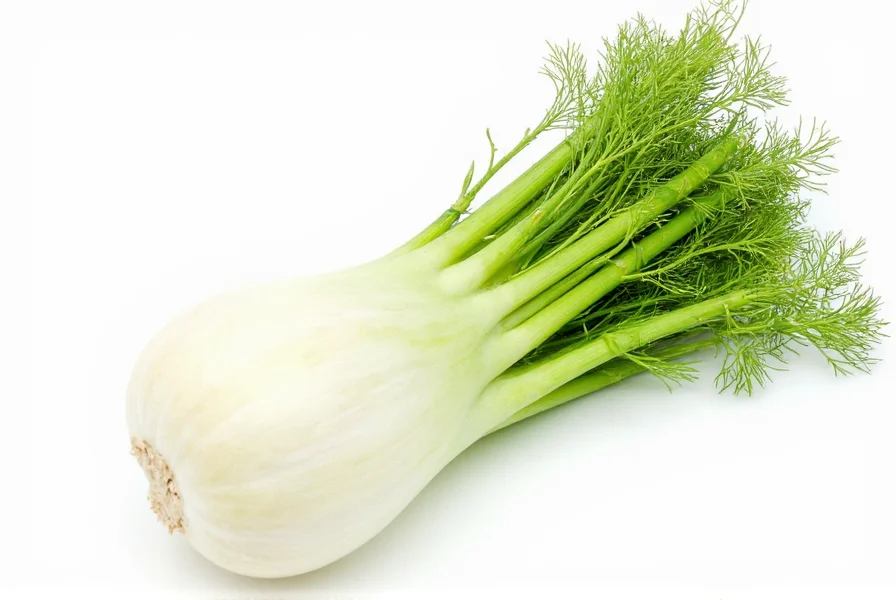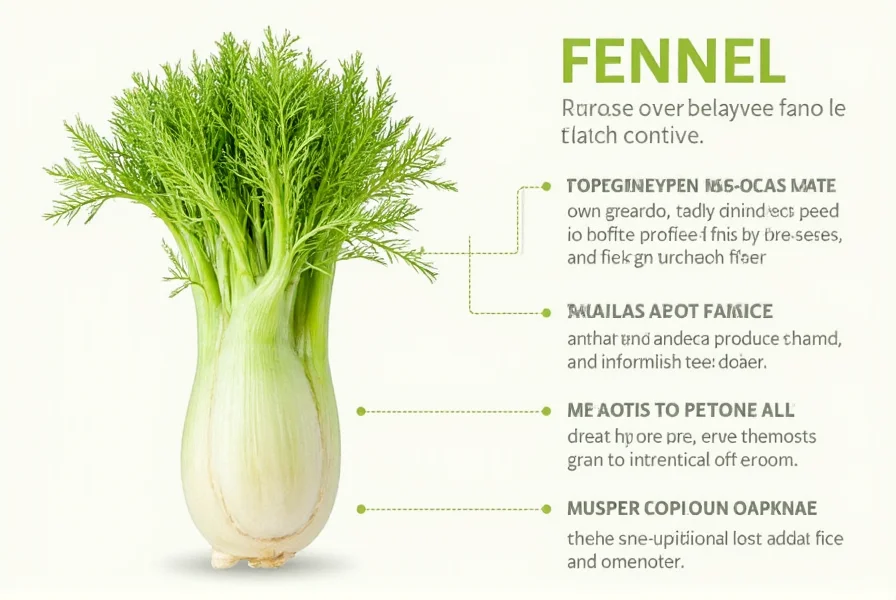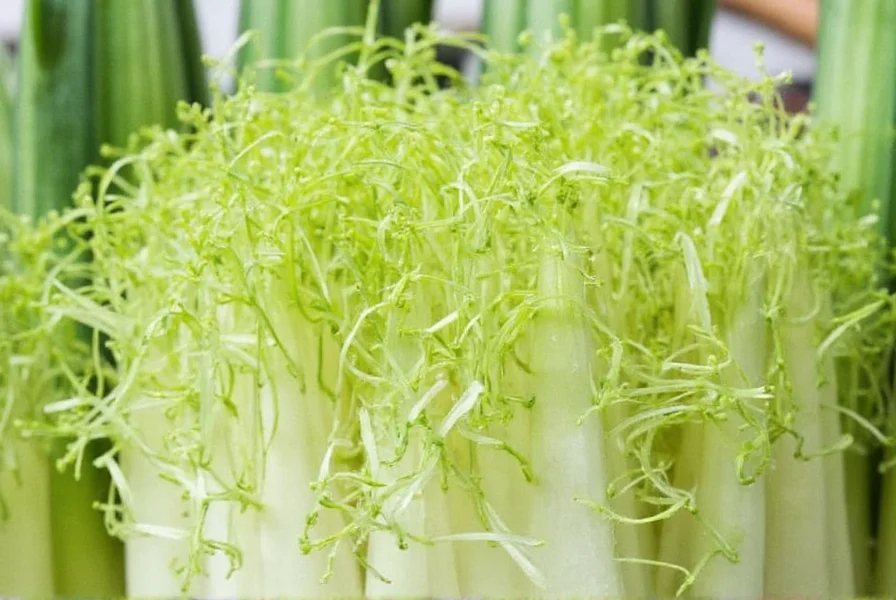Fennel's unique taste profile makes it a versatile ingredient in kitchens worldwide. Understanding what does fennel taste like helps home cooks and professional chefs alike incorporate this vegetable effectively into their dishes. The flavor experience varies significantly depending on which part you're using and how it's prepared.
The Flavor Profile of Fennel Bulb
The bulb—often mistaken for celery root—is fennel's most commonly used part. When raw, it offers a crisp texture similar to jicama with a refreshing, mildly sweet flavor that hints at anise but without overwhelming licorice intensity. Many first-time tasters describe raw fennel as "fresh," "crisp," and "subtly sweet with a cool finish."
Cooking transforms fennel's flavor profile dramatically. Roasting or braising caramelizes its natural sugars, yielding a flavor reminiscent of onions with a delicate sweetness and diminished anise notes. This transformation explains why many people who dislike how fennel tastes raw enjoy it cooked.
| Fennel Component | Flavor Intensity | Primary Flavor Notes | Best Culinary Uses |
|---|---|---|---|
| Bulb (raw) | Mild | Sweet, subtle anise, crisp | Salads, slaws, crudités |
| Bulb (cooked) | Moderate | Caramelized, onion-like, sweet | Roasts, braises, soups |
| Fronds | Mild | Herbal, dill-like, delicate anise | Garnishes, herb blends, dressings |
| Seeds | Strong | Pronounced licorice, warm, earthy | Spice blends, baking, sausages |
Comparing Fennel to Similar Flavors
Many people wonder does fennel taste like licorice or if it's similar to anise. While fennel shares the same compound (anethole) that gives licorice its distinctive flavor, fennel's taste is significantly milder and more complex. Unlike black licorice candy, which delivers an intense, sometimes polarizing flavor, fennel offers a balanced profile with herbal and sweet notes.
Fennel differs from anise seed in both intensity and application. Anise seeds pack a much stronger licorice punch and are used primarily as a spice, while fennel bulb serves as a vegetable with multiple culinary applications. Dill shares some herbal qualities with fennel fronds but lacks the characteristic anise notes.
How Preparation Affects Fennel's Flavor
Understanding what raw fennel tastes like versus cooked fennel is crucial for successful cooking. Raw preparation preserves fennel's crisp texture and bright, refreshing flavor—ideal for salads where it pairs beautifully with citrus, apples, and walnuts. The natural bitterness in raw fennel diminishes when combined with acidic dressings.
Cooking methods dramatically alter fennel's flavor profile:
- Roasting (400°F for 25-30 minutes): Develops deep caramelization and sweet, almost onion-like flavor
- Braising (simmered in liquid): Creates tender texture with mellow, integrated flavor
- Grilling: Imparts smoky notes that complement fennel's natural sweetness
- Sautéing: Quick cooking preserves some crunch while mellowing sharp notes
Overcoming Common Flavor Misconceptions
Many people avoid fennel due to misconceptions about its flavor. The question is fennel taste similar to anise often deters potential fans, but the reality is more nuanced. While related, fennel's flavor is significantly more subtle than pure anise.
For those sensitive to licorice flavors, start with small amounts of raw fennel in salads or try cooked preparations where the flavor mellows considerably. The outer layers contain more intense flavor—removing the first few layers can reduce the anise notes for sensitive palates.
Culinary Pairing Recommendations
Fennel's versatile flavor profile makes it compatible with numerous ingredients:
- Fruits: Apples, pears, oranges, and grapefruit complement fennel's crisp sweetness
- Proteins: Pairs exceptionally well with fish, pork, and chicken
- Vegetables: Combines beautifully with potatoes, tomatoes, and bell peppers
- Herbs: Works with thyme, rosemary, and parsley (but use dill sparingly)
- Dairy: Feta cheese and yogurt-based dressings balance fennel's flavor
When exploring fennel bulb taste profile in cooking, remember that its flavor absorbs and enhances other ingredients while contributing its own subtle complexity. In Mediterranean cuisine, fennel often forms the aromatic base of dishes alongside onions and celery (similar to mirepoix).

Regional Flavor Variations
Fennel's flavor can vary slightly based on growing conditions and variety. Florentine fennel (the large, round variety common in US markets) tends to have the mildest flavor, while smaller, more elongated varieties found in Mediterranean regions may offer slightly more pronounced anise notes. Seasonal variations also affect sweetness—fall-harvested fennel typically offers the sweetest, most developed flavor profile.
Understanding these nuances helps answer the common question how to describe fennel flavor accurately across different contexts. Whether you're a home cook experimenting with new ingredients or a professional chef refining your palate, recognizing fennel's flavor spectrum enhances your culinary capabilities.

Conclusion
Fennel's flavor—best described as a mild, sweet anise with refreshing crispness—offers remarkable versatility in the kitchen. Whether raw in salads or transformed through cooking, it provides a distinctive yet balanced flavor profile that enhances rather than dominates dishes. By understanding what does fennel taste like in various preparations, cooks can confidently incorporate this nutritious vegetable into their culinary repertoire, discovering why it remains a staple in kitchens from California to Capri.
Does fennel taste strongly of licorice?
Fennel has a mild licorice-like flavor, significantly less intense than actual licorice candy. The bulb offers only subtle anise notes, especially when cooked, while the seeds contain the strongest flavor. Many people who dislike strong licorice flavors still enjoy fennel in cooked preparations.
How does raw fennel taste different from cooked fennel?
Raw fennel has a crisp texture with a refreshing, slightly sweet flavor and cool anise undertones. Cooking transforms fennel, caramelizing its natural sugars and yielding a milder, sweeter profile similar to onions with diminished anise notes. Roasting particularly enhances its natural sweetness.
Are all parts of fennel edible and how do they taste different?
Yes, all parts are edible with distinct flavors. The bulb offers a mild, crisp sweetness; the feathery fronds provide a delicate herbal flavor similar to dill with subtle anise notes; and the seeds deliver the strongest licorice flavor. Each part serves different culinary purposes based on its unique taste profile.
Why do some people dislike fennel's taste?
Some people have a genetic sensitivity to anethole (the compound in fennel that creates licorice notes), making the flavor seem overpowering. Others may have only experienced poorly prepared fennel. Starting with cooked preparations or using smaller amounts can help those sensitive to the flavor appreciate fennel's versatility.
What ingredients pair well with fennel to balance its flavor?
Citrus (especially orange), apples, pears, and acidic dressings help balance fennel's flavor. It pairs exceptionally well with fish, pork, and chicken. Feta cheese, walnuts, and olive oil also complement fennel's profile. For those sensitive to anise notes, combining fennel with stronger flavors like garlic or rosemary can help integrate its taste.











 浙公网安备
33010002000092号
浙公网安备
33010002000092号 浙B2-20120091-4
浙B2-20120091-4